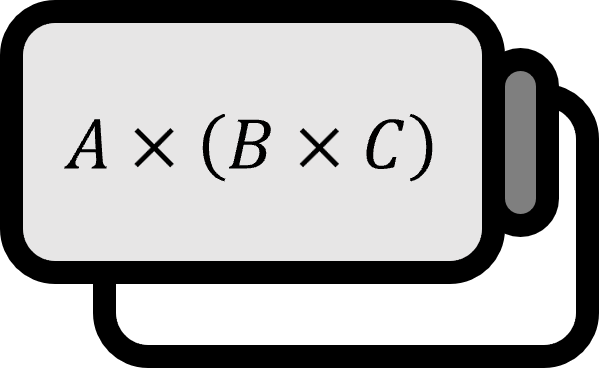Equation of an Ellipse with the Focus at the Origin in Polar Coordinates
Theorem

The equation of an ellipse in polar coordinates is given as follows.
$$ r=\frac{\alpha}{1+\epsilon \cos \theta}\tag{a} $$
or
$$ r=\frac{b^{2}/a}{1+\frac{\sqrt{a^{2}-b^{2}}}{a}\cos\theta} \tag{b} $$
Where $\alpha$ is the focal parameter, $\epsilon$ is the eccentricity, $a$ is the semi-major axis, and $b$ is the semi-minor axis.
Explanation
The two proofs below are essentially the same.
Proof
High School Level

The definition of an ellipse is the set of points where the sum of the distances to the two foci is constant. It’s easy to see from the diagram that the sum of the distances at the point farthest to the right is $2a$. Therefore, by the definition of an ellipse, $$ \begin{align*} \overline{F^{\prime}P} +\overline{PF} =2a \end{align*} $$ Considering the point $P$ at position $B$, you can derive the relation $b^{2}=a^{2}-c^{2}$.1 Therefore, $$ \overline{F^{\prime}F}=2c=2\sqrt{a^{2}-b^{2}} $$ Now, applying the Pythagorean theorem to the triangle $\triangle F^{\prime}PH$, we get $$ \begin{align*} &&(2a-r)^{2} &= (2 \sqrt{a^{2}- b^{2}}+r \cos \theta)^{2}+(r\sin \theta)^{2} \\ \implies && 4a^{2}-4ar+r^{2} &= 4(a^{2}-b^{2}) + 4r\sqrt{a^{2}-b^{2}}\cos\theta +r^{2}\cos^{2}\theta + r^{2}\sin^{2}\theta \\ \implies && 4a^{2} -4ar \ &= 4(a^{2} - b^{2}) +4r\sqrt{a^{2}-b^{2}}\cos \theta \\ \implies && (a+\sqrt{a^{2} - b^{2}}\cos\theta)r &= b^{2} \\ \\ \implies && r&=\frac{b^{2}}{a+\sqrt{a^{2}-b^{2}}\cos\theta} \\ && &=\frac{b^{2}/a}{1+\frac{\sqrt{a^{2}-b^{2}}}{a}\cos\theta} \end{align*} $$
■
University Level
The starting point of the proof is the same. By the definition of an ellipse,
$$ r^{\prime}+r=2a \tag{1} $$
Now, look at the diagram below.

Applying the Pythagorean theorem to the triangle above gives
$$ \begin{align*} {r^{\prime}}^{2} &= (r\sin \theta)^{2} + (2\epsilon a +r\cos \theta) ^{2} \\ &= r^{2}\sin ^{2} \theta +4\epsilon^{2}a^{2}+4\epsilon ar \cos \theta+ r^{2} \cos^{2} \theta \\ &= r^{2} + 4\epsilon^{2}a^{2} + 4\epsilon a r \cos \theta \end{align*} $$
Substituting $(1)$ into the left side of the above equation gives
$$ \begin{align*} && 4a^{2} -4ar+r^{2} &=r^{2} + 4\epsilon^{2}a^{2} + 4\epsilon a r \cos \theta \\ \implies && 4a^{2} -4ar &= 4\epsilon^{2}a^{2} + 4\epsilon a r \cos \theta \\ \implies && 4a^{2}(1-\epsilon^{2}) &= 4a(1+ \epsilon \cos \theta)r \\ \implies && r &= \frac{a(1-\epsilon ^{2})}{1+\epsilon \cos \theta } \end{align*} $$
If $\theta={\textstyle \frac{\pi}{2}}$, then the above equation becomes the following, and from the diagram, it can be seen that this value becomes the focal parameter $\alpha$.
$$ r=a(1-\epsilon^{2})=\alpha $$
Therefore, the equation of an ellipse in polar coordinates can be expressed as
$$ r= \frac{\alpha}{1+\epsilon \cos \theta} $$
■
It is a naturally obtained expression when deriving the equation of an ellipse. ↩︎
